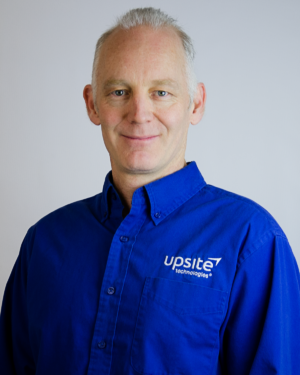6 Common Cooling Mistakes Data Center Operators Make15 min read

While airflow management and cooling optimization awareness has improved dramatically over the last decade, there are still issues that limit both the capacity and efficiency gains of such improvements. The goal of airflow management is to maintain or improve IT equipment intake air temperatures in a way that allows for increasing cooling control temperature set points and reducing cooling airflow volumes as much as possible (i.e. cooling optimization). If this is done effectively then cooling capacity is maximized while operating cost is minimized. Here are a few mistakes, in no particular order, I often see in computer rooms, even if they have made an effort to improve airflow management and cooling optimization.
1. Misplaced/excessive supply tiles
- Perforated tiles and grates are one of the easiest ways to manage airflow in the computer room; however of 45 sites recently studied only 6 had properly placed 100% of their supply tiles. The average was only 73% proper placement. Supply tiles should not be placed in open areas or hot aisles, only in front of IT equipment that requires conditioned air for cooling.
- Additionally, it is a common practice to install two full rows of perforated tiles or grates in cold aisles. However if these tiles are releasing more conditioned air into the aisle than the IT equipment in that aisle requires, then the excess leaves the aisle as bypass airflow. There are two ways to reduce the flow rate of conditioned air to the aisle, either remove some of the supply tiles or reduce the total volume of conditioned air circulating through the room. Which is appropriate depends on the unique conditions of the site.
2. Unsealed raised floor openings
- Although many sites have made an effort to seal cable openings and other holes in the raised floor, very few have completed the job. These remaining openings can easily release significant flow rates of conditioned air which limits the capacity and efficiency of the cooling infrastructure. It is particularly important to seal or at least reduce the flow rate of openings under electrical equipment such as power distribution units (PDU) or remote power panels (RPP).
3. Poor rack sealing
- The vertical plane at the face of IT equipment intakes should be sealed. This includes the installation of blanking panels in all open U spaces, sealing the space between the mounting rails and sides of the cabinet (if not sealed by design), and sealing under cabinets. The better this plane is sealed the less recirculation of exhaust air and loss of conditioned air there will be.
- When single or multiple cabinet spaces are left open the large open area either allows a significant loss of conditioned air to flow out of the aisle, or allows recirculation of exhaust air into the cold aisle. This condition, while not always causing hotspots for IT equipment intakes, does require higher flow rates and lower temperature conditioned air to overcome; this limits the capacity and efficiency of cooling.
4. Not calibrating cooling unit temperature and relative humidity (Rh) sensors
- The sensors on cooling units are often shipped out of calibration or drift over time. This results in the cooling units managing to inaccurate data. And can result in cooling units working against each other. Cooling units temperature and Rh sensors should be checked for calibration every 6 months and adjusted if necessary.
- Many sites have their Rh control set at around 45% +/- 5%. This tight control from 40% to 50% requires the cooling units to consume more energy to remove moisture and replace moisture than necessary. To reduce the Rh in the room, cooling units overcool to force moisture to condense on cooling coils; sometimes lowering the return air temperature to the point that heating coils are turned on to warm the air back up. Low Rh requires energy to put moisture back into the air often by boiling water. Most or all of this wasted effort can often be eliminated by broadening the Rh control.
5. Not planning the ultimate build out of the room
- Without a master plan for the ultimate location of all cabinets, mistakes are invariably made that limit both the utilization of raised floor space and cooling capacity. Also the uptime of the site can be compromised when an area of the computer room is loaded with more IT heat load than can be redundantly cooled by the cooling units in that area.
6. Failing to consider the full benefits of improving airflow management and cooling optimization
- Many sites have implemented airflow management improvements, and while they have seen the IT intake air temperature benefits, they have not made adjustments to the flow rate of conditioned air circulating through the room or to the temperature set points of cooling units. Without making these adjustments both capacity and operating cost improvements are left unrealized.
- These adjustments also allow for additional benefits beyond capacity and operating costs that are often overlooked. The cascading benefits continue through the mechanical plant and to the hours that economization can be utilized. Often how well cooling optimization is done will affect when major expansions or even new data center construction is required. For an evaluation of airflow management and cooling optimization improvements to be complete, all of these factors need to be considered.
The industry's easiest to install containment!
AisleLok® solutions are designed to enhance airflow management,
improve cooling efficiency and reduce energy costs.
The industry's easiest to install containment!
AisleLok® solutions are designed to enhance airflow management,
improve cooling efficiency and reduce energy costs.








0 Comments